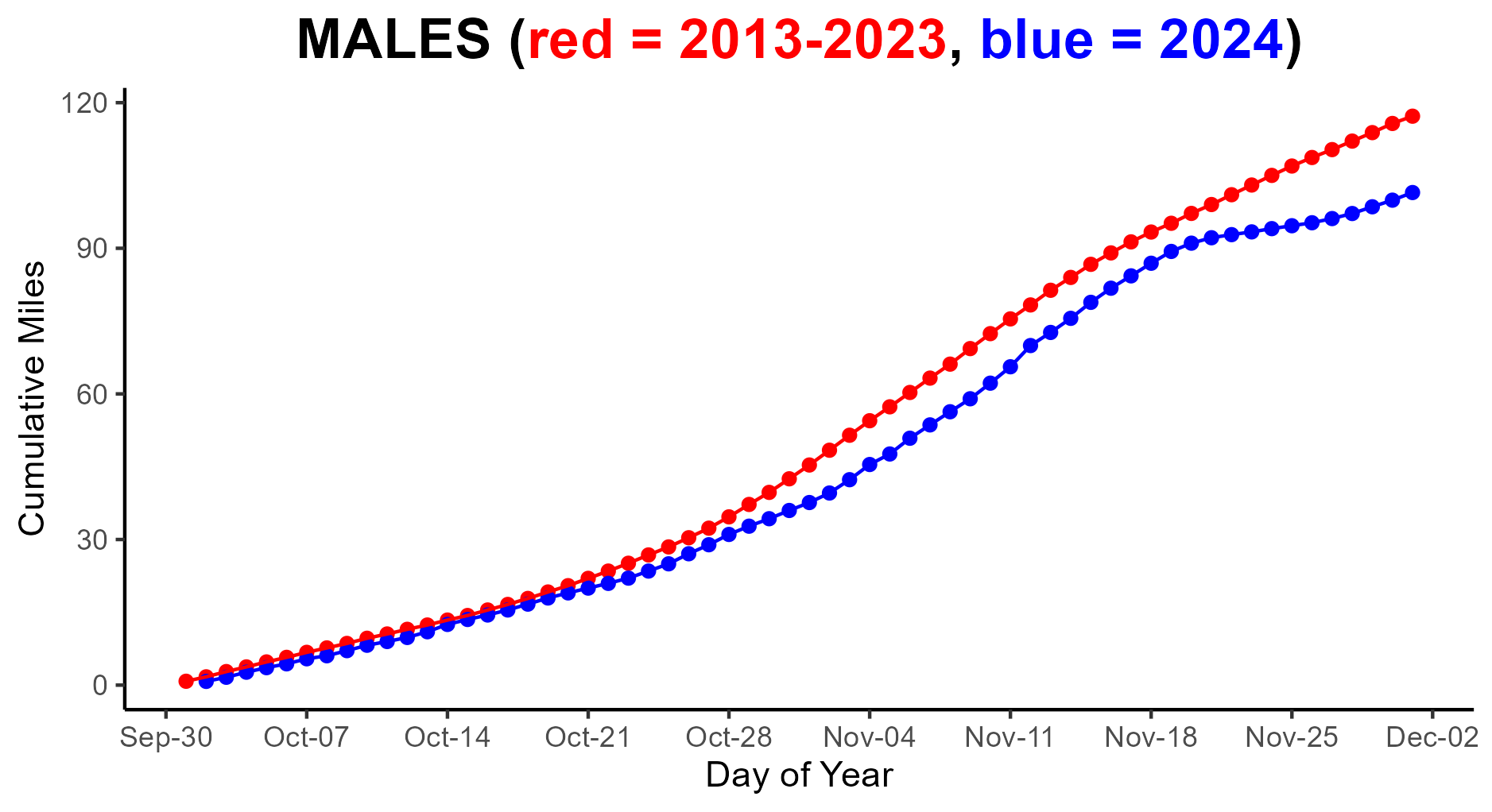2024 Rut Tracker
Last updated through December 2, 2024 (As data are uploaded, the most recent estimates may not include data from all animals. These estimates are expected to change as more data from the radiocollars are uploaded to the satellites)
You may have heard all about how each year the rut is affected by the moon (it’s not), gas prices (?), temperature (it’s not), and El Nino (see temperature). We have 11 years of data on how far deer travel and when deer are on the move during the rut. Follow us in 2024 as we see how it differs from the long-term average!
Males – the graph below shows the 2013-2023 average daily movement (red) and 2024 (blue). The shaded areas represent the 95% confidence interval of our estimates. These shaded areas simply represent the precision of our estimates – the long-term average is based on hundreds of deer whereas the 2024 data is based on less than a dozen. Smaller shaded areas simply mean more data were available and we have better estimates.

Below is the cumulative distance traveled by males. You can see by the end of November the average male is expected to have traveled nearly 120 miles.

Females – Their goal this time of year is to put on enough fat to survive the winter plus have the energy to support the fawns developing in their womb. Plus, the males are doing all the walking so any potential mates will seek them out so they don’t have to (they just pick who they want as mates). In northern Pennsylvania very few fawns (<5% will get pregnant) but in southern Pennsylvania it can be 40% or more. Across northern Pennsylvania >90% of adult females become pregnant every year. Even those 12 or more years old!


